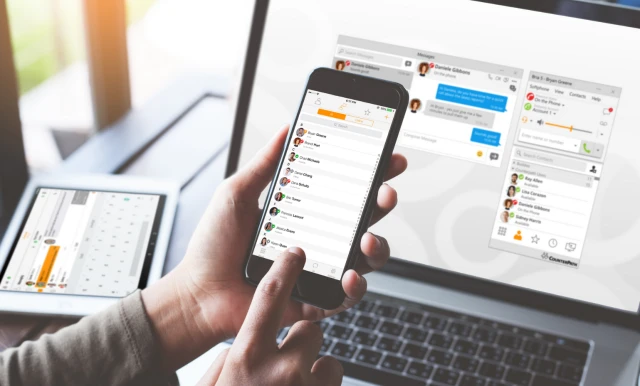What is SIP port? The SIP port is a network port used to send and receive SIP signaling messages between SIP endpoints. The SIP protocol port is used for initiating, modifying, forwarding, and terminating real-time sessions that involve voice, video, messaging, and other communication applications and services.
It’s worth noting that some firewalls and network devices may block SIP traffic by default. Therefore, it’s important to configure the necessary ports and network settings to allow SIP traffic to pass through the network properly. Freezvon SIP provider uses port 5060 for SIP traffic.
SIP server peculiarities
Its main task is to organize and maintain calls between two subscribers and collective calls with a large number of participants. It is solved due to the following functions of the SIP server:
- Establishing communication between subscribers and coordinating all media characteristics. That is, it turns out that the SIP server determines the wide range of rules and informs the endpoints of the conditions for data exchange (IP addresses of subscribers, ports, communication format, protocols used, methods used to compress data, etc.).
- Changing the parameters of the current session depends on external and internal factors.
- Switching between subscribers participating in a call (conference).
- Ending a communication session.
Thus, the SIP server is not directly involved in the processing of audio and video. It only manages all these processes, acquainting subscribers with the rules of participation in the conversation.
What is it for?
- Firstly, the SIP protocol used allows you to combine different types of devices into a single network.
- Secondly, Internet networks and protocols are used when engaging this technology.
- Thirdly, this method of communication is much cheaper than using fixed unreliable telephone lines, cellular communications, etc. At the same time, calls between corporate network subscribers via internal lines are free.
What is a SIP port in this system? It’s an essential part that can’t be avoided.
What port does SIP use?
SIP uses SIP port number 5060 for both TCP and UDP protocols. However, it’s important to note that SIP can also use other port numbers, depending on the implementation and network configuration. For example, some SIP systems may use port 5061 for secure SIP communication, while others may use different port numbers for specific functions such as SIP message authentication.
SIP uses various ports for different purposes.
- SIP signaling port: The default SIP port is 5060 for both TCP and UDP protocols. This port is used for sending and receiving SIP signaling messages between SIP endpoints.
- SIP over TLS port: SIP can also be run over a secure transport layer using TLS. The default port for SIP over TLS is 5061.
- RTP/RTCP port range: SIP does not handle the actual transfer of media (audio, video, etc.) but it sets up the session and negotiates the media transport parameters between endpoints. SIP typically uses the RTP and its control protocol RTCP for media transfer.
In summary, SIP uses port 5060 for signaling, port 5061 for secure signaling, and a dynamically negotiated range of ports for RTP and RTCP media transport.
If you don’t know whether the necessary ports are open in your network, check with your IT team and listen to the specialists.
Benefits
Buying a SIP trunk for organizing corporate communications has a number of significant advantages.
- Fail-safe dialing due to automatic call reservation using at least three independent connections.
- Ability to connect any devices due to the availability of FMC technology.
- Extensive options for setting restrictions to ensure secure connections.
- Possibility of combining your corporate PBX with Freezvon office PBX.
You can learn more about the possibilities and benefits of this SIP trunk port and the service in general by contacting Freezvon support team.



